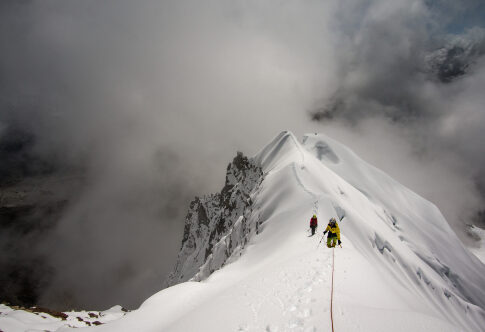A freak October blizzard on Mount Everest has trapped 200 hikers in deadly conditions, exposing the dangerous consequences of inadequate weather preparedness and the limits of rescue capabilities in remote wilderness areas.
Unprecedented Storm Catches Holiday Hikers Off Guard
The blizzard struck Mount Everest’s eastern slopes on October 4, 2025, during China’s National Day Golden Week when tourist numbers peak dramatically. Weather forecasts failed to predict the storm’s severity, leaving hundreds of hikers exposed at altitudes exceeding 16,000 feet where survival becomes increasingly difficult without proper shelter. The timing couldn’t have been worse, as October typically represents the post-monsoon safe period for mountain trekking, making this weather event highly unusual and catching both guides and tourists completely unprepared for such extreme conditions.
Heroic Rescue Operations Battle Extreme Conditions
Local rescue teams mobilized immediately, using shovels, ropes, snow vehicles, and even horses and oxen to reach stranded groups scattered across the remote eastern slopes. Emergency shelters were established in Qudang township, providing critical food, heat, and medical aid to evacuees suffering from severe hypothermia and exhaustion. The rescue effort has successfully evacuated 350 people, but approximately 200 remain in contact with rescuers while awaiting evacuation in deteriorating conditions that pose ongoing threats to their survival.
Remote Terrain Complicates Life-Saving Efforts
The affected area’s extreme remoteness, combined with limited infrastructure and challenging access routes, has severely hampered rescue operations despite heroic efforts by local communities and emergency services. Rescue professionals emphasize the extraordinary difficulty of conducting operations at such high altitudes in deep snow conditions, where communication remains spotty and weather continues to threaten both stranded hikers and rescue personnel. The incident highlights the inherent risks of adventure tourism in areas where government emergency response capabilities are stretched thin and weather can turn deadly without warning.
Disaster Exposes Tourism Safety Gaps
This tragedy underscores critical weaknesses in weather forecasting systems and emergency preparedness protocols for high-altitude tourism, particularly during peak holiday periods when oversight becomes more difficult. The incident may prompt stricter regulations on trekking permits and safety requirements, potentially impacting the tourism industry’s balance between accessibility and responsible risk management. Mountaineering experts note this storm’s unusual timing and severity highlight the unpredictable nature of mountain weather, raising questions about whether current safety protocols adequately protect adventurers who venture into these remote and dangerous environments.
Hundreds of hikers still stranded on Mount Everest after storm, 2 dead https://t.co/CLsd1945kK
— One America News (@OANN) October 7, 2025
The psychological trauma experienced by survivors and the heroic efforts of local rescue teams demonstrate both human resilience and the ongoing dangers facing those who seek adventure in some of Earth’s most unforgiving terrain. As rescue operations continue, this incident serves as a stark reminder that nature’s power can overwhelm even the best-prepared expeditions, making personal responsibility and proper preparation absolutely essential for wilderness survival.
Sources:
Bitrue Blog: “Snowstorm Everest 2025: What’s Happening?”
Country Rebel: “Hundreds Of Hikers Remain Stranded As Severe Blizzard Hits Mount Everest”
Newshub: “Emergency rescue operations underway as climbers get trapped by sudden Everest snowstorm”
GBC Ghana Online: “More than 200 hikers still stranded after blizzard hits Mount Everest”
ABC News: “Mount Everest snowstorm leaves hundreds hikers trapped”


